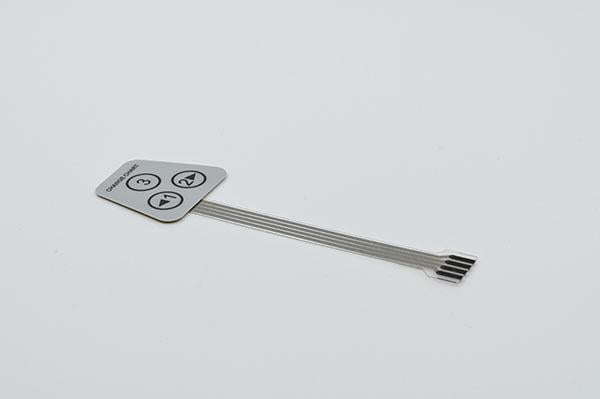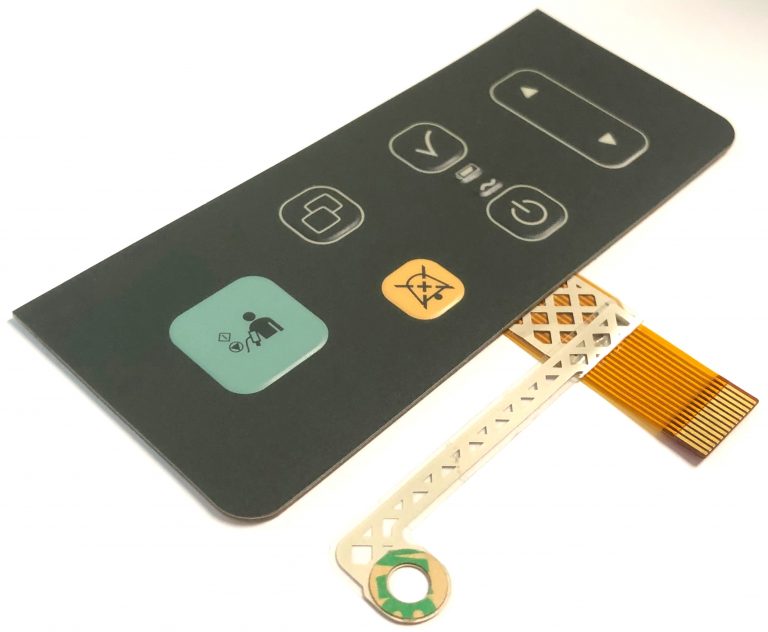Choosing the right membrane switch manufacturer can greatly impact your product's quality.
Choosing the right membrane switch manufacturer can greatly impact your product's quality.
Blog Article
Everything About Membrane Layer Change: Comprehending Its Design and Functionality
When you consider the control user interfaces in modern tools, membrane switches typically enter your mind. These components are greater than simply switches; they blend style and performance effortlessly. Understanding exactly how they function and what makes them efficient can alter your viewpoint on day-to-day electronics. Yet, there are subtleties to their style and performance that you might not recognize. Let's explore what sets membrane switches apart from various other control systems.
What Are Membrane Layer Buttons?

Their smooth nature makes them easy to tidy and immune to dust and wetness, an essential function in numerous environments. Membrane layer buttons can likewise be tailored relating to shape, dimension, and graphics, enabling producers to create distinct interfaces customized to certain items. And also, they're light-weight and thin, which helps in reducing the general bulk of tools. On the whole, membrane switches play a considerable role in enhancing customer experience across a wide range of applications.
Exactly How Membrane Layer Changes Job
When you press a secret on a membrane layer button, it triggers a straightforward yet efficient device. The top layer, usually made from adaptable material, presses down onto a conductive layer beneath it. This action bridges the void in between conductive traces, finishing an electrical circuit. As soon as the circuit shuts, it sends a signal to the device's controller, which translates your input.
You'll observe that the responsive responses differs based upon the button style, supplying either a soft click or an extra obvious response. Once you release the secret, the membrane layer go back to its original setting, resuming the circuit and quiting the signal. This procedure occurs practically instantaneously, making certain a receptive individual experience.
Membrane layer buttons are prominent as a result of their sturdiness and resistance to dirt and dampness, making them suitable for numerous applications, from house appliances to medical devices. Understanding this operation helps you value their widespread use.
Key Components of Membrane Layer Switches
Recognizing the key components of membrane layer switches is fundamental for realizing their functionality and style. The protective layer shields versus environmental aspects and use, extending the button's life-span. By understanding these components, you'll obtain understanding right into just how membrane layer changes run and their importance in numerous applications.
Materials Made Use Of in Membrane Switch Over Layout
The performance and resilience of membrane changes greatly depend upon the products made use of in their layout. You normally come across polyester and polycarbonate as primary substrates as a result of their outstanding stamina and adaptability. These materials withstand scrapes and chemicals, making them optimal for requiring atmospheres.
The conductive layers often utilize silver or carbon, picked for their reliability and conductivity. membrane switch manufacturer. Silver offers exceptional performance, while carbon is an affordable choice. For the overlay, you might consider a matte or shiny coating, relying on your visual demands and user experience
Make certain to pick adhesives that hold up against ecological aspects like temperature level and moisture. Selecting the appropriate materials will certainly guarantee your membrane switch stands the test of time.
Design Considerations for Membrane Buttons
While developing membrane switches, it's crucial to think about numerous aspects that affect their capability and user experience. Begin by concentrating on the design and switch dimension; make sure they're intuitive and very easy to navigate. Take into consideration the responsive feedback you want to give-- will individuals require a visible click or a softer touch? Furthermore, think of the materials you'll make use of, as they'll influence durability and appearances.
Confirm your design fits ecological aspects, like moisture or temperature level variations, which might impact efficiency. By thoroughly considering these elements, you'll produce a membrane layer button that enhances usability and complete satisfaction.
Applications of Membrane Layer Buttons
Membrane buttons are functional components discovered in different applications, from industrial equipment to consumer electronic devices. You'll see their influence in devices that call for long lasting interfaces and in gadgets that take advantage of streamlined designs. Comprehending these applications helps you appreciate the capability and practicality of membrane buttons in daily technology.
Industrial Equipment Use
When you're aiming to improve the capability of industrial equipment, membrane layer switches use a trustworthy solution that incorporates durability with user-friendly design. These switches are perfect for link extreme environments, giving resistance to dirt, wetness, and chemicals. You'll discover them in control panels for making makers, heating and cooling systems, and medical devices, where precision and responsiveness are vital. Their reduced account indicates they fit perfectly right into numerous equipment, conserving valuable room while keeping convenience of use. With adjustable graphics and backlighting alternatives, you can develop an instinctive interface for drivers, boosting efficiency and safety and security. And also, their lengthy life expectancy decreases upkeep prices, making them a clever financial investment for your industrial applications. Welcome membrane layer buttons to improve your operations and boost overall efficiency.
Customer Electronic Devices Integration
In the domain name of consumer electronic devices, membrane switches play a necessary function in boosting customer interaction and device performance. You'll find them in devices like microwaves, push-button controls, and video gaming consoles, offering a smooth way to communicate with technology. Their sleek layout enables easy combination into various products, making controls instinctive and user-friendly. With their capacity to integrate graphics and backlighting, you can take pleasure in a modern-day aesthetic that enhances the device's overall appearance. Membrane layer switches likewise guarantee sturdiness and resistance to dirt and wetness, expanding the life expectancy of your electronic devices. By picking membrane switches, you enhance not just the performance yet additionally the style of your tools, making day-to-day interactions smooth and pleasurable.
Advantages and Disadvantages of Membrane Buttons
While membrane switches supply a range of advantages, they also come with some drawbacks that you should take into consideration. One considerable advantage is their portable design, making them ideal for space-constrained applications.

Membrane buttons can have a much shorter lifespan compared to mechanical switches, especially under heavy usage. They can additionally be much less tactile, which could affect customer feedback throughout operation. Balancing these pros and disadvantages will aid you identify if membrane layer switches are the ideal fit for your task.
Frequently Asked Inquiries
For How Long Do Membrane Layer Changes Commonly Last?
Membrane layer changes generally last between 5 to ten years, relying on use and ecological conditions. You'll intend to examine factors like wear, direct exposure to dampness, and temperature level fluctuations to evaluate their durability properly.
Can Membrane Layer Switches Over Be Customized for Details Styles?
Yes, you can customize membrane layer buttons to fit details designs (membrane switch manufacturer). You'll have the flexibility to choose shades, shapes, and formats that match your project's requirements, ensuring they blend effortlessly with your general aesthetic
What Is the Price Array for Membrane Layer Switch Manufacturing?
The cost array for membrane layer switch production generally falls between $1 and $10 per system, depending on elements like style intricacy, amount, and products. You can get quotes from producers to discover the finest choice.

Are Membrane Layer Changes Water Resistant or Immune?
Membrane layer switches can be created to be water-proof or immune, depending on try this web-site products utilized and building and construction techniques. If you require them for damp environments, guarantee you define those needs throughout the layout process.
Exactly How Do Membrane Layer Switches Over Compare to Traditional Switches?
Membrane switches are generally thinner and extra versatile than typical buttons, supplying a smooth style. They're often less complicated to cleanse and integrate, but could not offer the responsive responses you're made use of to with mechanical choices.
Verdict

Report this page